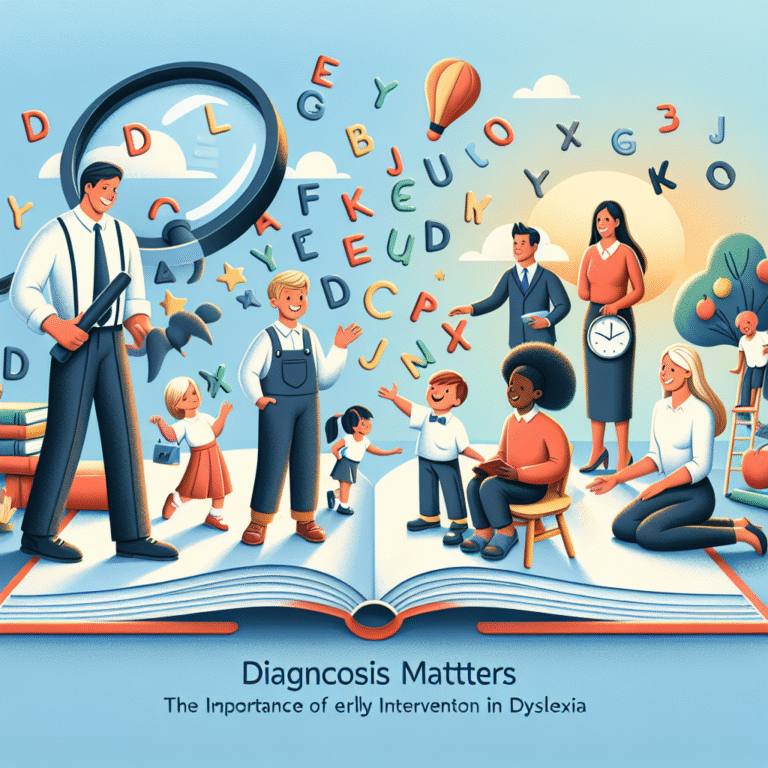
Introduction
In today’s rapidly changing educational landscape, the collaboration between families and schools is emerging as a cornerstone of student success. The profound phrase "Unleashing Potential: The Role of Family-School Connections in Academic Achievement" encapsulates the essence of this synergetic relationship. As we delve into this topic, it becomes evident that fostering strong family-school connections can significantly enhance academic performance, socio-emotional development, and the overall educational experience for students.
Imagine a scenario where parents, teachers, and educational institutions work hand in hand, empowering students to realize their full potential. What if the secret to unlocking academic achievement lies not just in curricula and assessments, but in collaborative efforts that engage families as active partners in education? This article explores how these connections can be cultivated, their impact on student performance, and actionable strategies for implementation.
The Importance of Family-School Connections
Understanding the Concept
Family-school connections refer to the collaborative relationships and partnerships between families and educational institutions. These partnerships thrive on communication, shared responsibilities, and mutual respect. Emerging research highlights that the more engaged families are in their children’s education, the higher the students’ academic performance tends to be.
The Research Behind the Impact
Research consistently shows that when families are involved in their children’s schooling, students exhibit improved academic outcomes, higher graduation rates, and enhanced socio-emotional well-being. According to a study by the National Center for Family & Community Connections with Schools, student achievement improves when families are engaged, leading to an impressive 25% increase in performance in some cases.
Case Study: The School-Community Partnership Initiative
In Chicago, the School-Community Partnership Initiative engaged schools, parents, and local organizations to foster community involvement. This initiative saw substantial improvements in standardized test scores within just two years, demonstrating the effectiveness of building strong family-school connections.
How Family-School Connections Foster Academic Success
Enhancing Communication
Effective communication is the backbone of family-school partnerships. Keeping parents informed about curriculum changes, student progress, and school events helps create a supportive environment.
Example Communication Strategies
Monthly Newsletters: Schools can send out newsletters updating families on events, academic expectations, and tips for supporting learning at home.
- Digital Platforms: Tools like ClassDojo or Remind can facilitate real-time communication between teachers and parents, creating a dynamic connection.
Encouraging Parental Involvement
When parents become active participants in their child’s education, it creates a supportive learning environment both at school and home.
Ways to Engage Parents
- Volunteer Opportunities: Schools can offer opportunities for parents to assist in classrooms or school events.
- Workshops and Training: Providing workshops on academic support strategies allows parents to learn how best to assist their children.
Building a Supportive Community
Schools should seek to create an inclusive community that encourages stakeholder participation, involving not just parents but also local organizations.
The Role of Community Partners
- Local Businesses: Establishing partnerships with local businesses can provide resources, mentorship, and even financial support for school programs.
Addressing Diverse Needs
With diverse student populations, it’s crucial to address cultural and linguistic variations in family-school connections.
Strategies for Inclusivity
- Multilingual Communication: Providing materials and communication in multiple languages ensures all families feel included.
- Cultural Events: Hosting events celebrating different cultures fosters greater community engagement and understanding.
Overcoming Barriers to Family-School Connections
Identifying Common Barriers
Many families face obstacles that prevent their involvement in school activities. Barriers may include work commitments, lack of transportation, language differences, and even feelings of alienation from the school environment.
Solutions to Enhance Engagement
Approach 1: Flexible Engagement Options
Schools can offer virtual meetings or asynchronous communication options for parents unable to attend in-person events. This flexibility encourages participation without compromising family responsibilities.
Approach 2: Empowering Staff
Educators are crucial in making families feel welcome. Training staff to communicate effectively with families can help break down barriers.
Case Study: A Multi-Faceted Approach
In a Texas school district, a comprehensive approach was used to engage families facing barriers. With initiatives like transportation assistance for events and virtual meetings, parent attendance increased by 60%. These strategies highlight how overcoming barriers is essential for unleashing potential.
The Role of Technology in Family-School Connections
Embracing Digital Solutions
In the digital age, technology plays a vital role in enhancing family-school connections. Schools can utilize digital platforms to communicate effectively with parents, track student progress, and foster engagement.
Tools and Apps
- Learning Management Systems: Platforms like Google Classroom allow parents to monitor assignments and grades.
- Social Media: Schools can create Facebook groups or Instagram accounts to share updates and celebrate student achievements.
The Benefits of Technology
By leveraging technology, schools can reach a broader audience, facilitate parent engagement, and create a more efficient communication system.
Case Study: EdTech at Work
A district in California successfully implemented a digital communication platform that allowed real-time updates. Parent engagement rose significantly, impacting students positively, as evidenced by improved grades.
Measuring the Success of Family-School Connections
Key Metrics for Assessment
To gauge the effectiveness of family-school connections, schools should consider several metrics, including:
- Parent Attendance Rates: Tracking participation in school events gives insight into engagement levels.
- Student Performance Data: Correlating academic performance with parental involvement can illuminate the effectiveness of strategies.
- Surveys and Feedback: Conducting surveys can help schools assess parents’ perceptions of engagement efforts and their suggestions for improvement.
Analysis of Metrics
Regularly analyzing these metrics ensures that schools can adapt their strategies to the needs of families and students, driving continuous improvement.
Actionable Strategies for Schools and Families
Collaborative Action Steps
Set Mutual Goals: Schools and families should collaboratively set educational goals for the students, ensuring everyone is on the same page.
Regular Check-Ins: Establish regular meetings between teachers and parents to discuss student progress and address challenges.
- Celebrate Success: Acknowledge and celebrate the achievements of both students and families, reinforcing positivity in the learning environment.
The Role of Educators
Teachers should receive training to engage families effectively. Understanding how to communicate with parents from various backgrounds is essential for fostering an inclusive environment.
Conclusion: Inspiring Collective Action
As we reflect on "Unleashing Potential: The Role of Family-School Connections in Academic Achievement," it is clear that fostering these connections is essential for academic success. By engaging families, addressing barriers, utilizing technology, and measuring success, we can create a holistic educational experience that nurtures and harnesses student potential.
Every child deserves the support of both their family and school, and it is our collective responsibility to strengthen these bonds. Together, more can be achieved—let’s unlock the potential in all of our students through empowered family-school partnerships.
FAQs
1. Why are family-school connections important for academic achievement?
Family-school connections are vital because engaged families positively impact students’ motivation, attendance, and academic performance.
2. What are some common barriers to family engagement?
Common barriers include work commitments, lack of understanding of the education system, and cultural or language differences.
3. How can schools improve communication with parents?
Schools can enhance communication by using technology, sending regular updates, and hosting informational workshops for parents.
4. What role does technology play in family-school connections?
Technology facilitates real-time communication, access to student information, and engagement opportunities, making it easier for families to connect with schools.
5. How can families get involved in their child’s education?
Families can get involved by attending school events, volunteering, and supporting their child’s learning at home with essential resources and encouragement.
Through informed strategies and continuous collaboration, we can all play a part in unleashing the potential present in every student, marking the start of a journey toward lasting academic success.

















